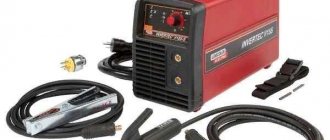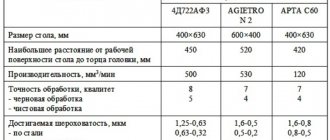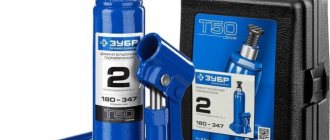Electrical discharge machining (EDM) involves the removal of layers of material from a workpiece due to the melting and subsequent evaporation of the substance under the influence of electrical pulses arising in the interelectrode gap. A mandatory requirement for a material processed by EDM is its ability to conduct current.
Specialists carry out processing using the electrical erosion method using electrical erosion machines (EDM) of various types. One of the most common EESs are wire-cut ones. In machines of this type, a stretched wire is used as an electrode tool.
Wire-cut EES: description of the work process
Let us consider in a simplified form the operating principle of wire EPS.
During processing on a wire machine, a process current generator (TCG) supplies a pulse voltage to the wire and the workpiece. Then, when at a specific point in the interelectrode gap the field strength is above the critical level, breakdown occurs and a plasma channel is formed.
Technically, this process resembles a lightning strike, when a high-voltage electrical discharge, moving towards an object on the ground, converts the air into a highly conductive plasma. The impact of discharges on the workpiece forms microscopic holes in it. To ensure that it is the workpiece rather than the wire that is more subject to erosion, the latter is endowed with a negative charge.
The main task of the coolant (water or dielectric compounds) is to remove erosion products from the treatment site. In addition, it cools the wire, which heats up during machine operation.
Electroerosive machine Accutex AL 4005A
A uniform impact on the workpiece can be achieved by supplying high-frequency electrical pulses. As the gap increases, the electrodes can move in the desired direction relative to each other, ensuring continuity of the EEO. In this way, workpieces of any hardness can be cut and processed with high precision. Moreover, the processing area does not always have a cylindrical shape: its inclination can be arbitrarily changed without interrupting the process.
Most often, the workpiece is placed horizontally, and the EI working area is placed vertically. The trajectory along which the center of the wire moves at one end or another of the working area must deviate from the set one by a distance determined by the width of the gap and the radius of the EI. This displacement is called equidistant.
Parts obtained by electrical discharge machining with the movement of a wire electrode along a complex trajectory offset from the vertical.
Factors influencing the processing speed of a workpiece using wire EES
The cutting speed of the workpiece electrode tool depends on the following factors:
- melting temperature of the workpiece material;
- thermal conductivity;
- electrical conductivity;
- intensity of washing the interelectrode gap.
Of course, a number of other, less significant factors are also at play. The processing speed is approximately proportional to the power generated in the gap, but the higher it is, the lower the processing accuracy and the rougher the processed surface. To level out these factors, treatment is usually carried out in several approaches, gradually reducing the power of the GTT and changing the equidistant displacement.
At the last stages of processing, the risk of wire breakage due to its destruction becomes minimal, as does the amount of material removed per pass. Many EDM operators use alternating current or opposite polarity at this stage.
Cutting a stainless steel punch
Requirements for wire-cut EPS
There are a number of requirements for the operation of wire-type EES that the machine must meet:
- safety of use;
- low energy consumption;
- environmental friendliness (no release of harmful substances into the environment);
- ease of use, durability, reliability.
During the cutting process, the electrical erosion specialist must maintain the accuracy of the part dimensions, surface roughness, monitor and adjust the processing speed if necessary. During the work, the specialist can also perform additional functions (for example, carry out precision measurements for correct basing).
Electroerosive machine Accutex HG-40
Application area.
When designing the machines of LLC NPP "MEATEK", processing accuracy, ease of operation, labor savings and long service life were taken as a basis, which undoubtedly affected the popularity of this equipment and its widespread use in enterprises of various levels. These machines are mainly used in the production of stamps and molds, because Accuracy is the main advantage of these models. With just one tool to get the job done, this machine is your affordable alternative to milling, turning and grinding equipment.
EES of wire and pierced type: design, differences, features of the EES used
Wire-cut machines are often contrasted with piercing units. The main difference between them is that in wire EPS, productivity is measured by the cutting area per unit of time, and not by the volume of material melted over a certain time period.
It is impossible to judge unequivocally which type of machine provides the best processing quality. The dimensional accuracy of the finished part depends both on the device itself and on the parameters of the workpiece and the properties of the electrode tool.
Cutting process: 1 – workpiece, 2 – spacer, 3 – copier, 4 – table for securing the workpiece.
The EDM process on a wire cutting machine would not be possible without constant updating of the working area of the wire material. During operation, the wire EI is rewound at a speed of 5 to 11.5 m per minute. In this case, it is important that the EI remains under a certain tension and is accurately fixed in the gap of the working area using guides.
In most machines, guides, current supply contacts and tubes supplying jets of coolant are combined into a single system. Current leads are most often made of carbide materials and are located behind the working area, in close proximity to the guides.
When the machine is operating, the coolant must wash not only the erosion gap, but also the entire surface of the wire located between the moving contacts. This is necessary to prevent heating of the wire due to the flow of large pulse voltages through it.
One of the most important operating systems of an EPS is its power supply system. It is responsible for generating and switching voltages of the required value, ensures the correct order of starting and shutting down the EES, diagnoses and monitors the network condition, and ensures the correct operation of the CNC during short-term unexpected power outages.
Advantages of our equipment:
- Processing of any conductive materials of any hardness.
- No chips (metal melts and evaporates).
- No thermal or mechanical influence on the structure (the surface is not deformed).
- The minimum cutting thickness of 0.2 mm allows you to effectively save the processed material.
- The ability to obtain parts of complex shapes and very small sizes, the production of which is difficult by other methods.
- Processing of holes of small diameters and roundings of small internal and external radii.
- Possibility of batch processing.
- Due to the low cost of the processing process and eliminating the problems of manufacturing expensive punching dies, the machine is the best replacement for stamping production.
- Possibility of short-term payback of equipment in the presence of problematic parts due to the overall low cost of processing, quick changeover of equipment from one product to another.
- The simplicity of the machine design increases its reliability.
- The presence of a wire drum, which rotates in different directions and at different speeds, thereby ensuring rough and finishing cuts.
- Repeated use of a wire electrode reduces the cost of the processing process.
- Rational use of consumables.
- Simplicity and clarity of creating complex contours and surfaces using the popular CAM/CAD programs Compass and AutoCAD.
Wire electrode feeding
A simple system for transporting wire in an EES consists of a drive shaft with a motor that sweeps the EES at a set speed, regardless of the degree of tension. In addition to the shaft, it includes wear-resistant guides and pulley systems. EI, as a rule, is used repeatedly, it is looped and moves “in a circle” during operation. The electrode-tool supply system is also equipped with a wire break sensor.
Brass wire for EPS
Replacing the wire is necessary when it breaks or before starting a large amount of work. Assuming that the GCT can produce sufficient cutting power, the thickness of the wire directly affects the possible achievable cutting speed. However, the use of thick wire accelerates the clogging of the filter elements of the coolant cleaning system and also negatively affects the processing accuracy.
Of particular importance is stable tension and uniform feeding of wire EI, especially when it comes to conducting contact measurements or cleaning. Jerks during wire feeding are the main cause of inaccuracies in contact measurements, which can lead to serious errors in alignment.
Functions and principle of operation of the process current generator (GCT)
The main task of the generator is to ensure the breakdown and flow of current pulses that perform processing. For EDM to be productive, significant instantaneous pulse power is required, the supply of which is complicated by restrictions due to the possibility of wire breakage. That is why the current is supplied in the form of short pulses. The shorter the pulse and the higher its peak value, the better for processing.
After a breakdown occurs, the characteristics of the gap change noticeably: the resistance after the appearance of the plasma channel drops, the voltage also quickly decreases, and the generator, in fact, begins to operate in a short circuit. Immediately after a breakdown, the materials need some time to renew the environment - otherwise, breakdowns may occur again in the same area, which will not have the best effect on the condition of the electrode tool.
The pause in operation is usually several microseconds at a relatively high feed speed of the electrode-tool. At the same time, it is important to ensure prompt removal of erosion products from the working area.
There are three common reasons for intense destruction and breaking of wire during work:
- Reduced strength due to heating. When working with thick workpieces, the EI temperature in the gap increases to several hundred degrees. In this case, it is important to give the electrode tool intensive cooling.
- Thermal break. Occurs as a result of a reduction in cross-section under the influence of erosion. To reduce the number of thermal breaks, the rewinding speed and coolant supply intensity should be increased.
- The appearance of short-circuiting bridges due to gap inhomogeneity. Short circuits most often occur in narrow gaps that are heavily contaminated during the EDM process. Improving flushing and immediately reducing the power of the gas turbine engine when signs of a short circuit are detected will help eliminate the problem.
Copy stitching machines
1-axis CNC copying and broaching machines. D71 series
- Video
- Reviews
- Specifications
1-axis CNC copying and stitching machines, with “autotechnologist” function Series LS ZNC, ARISTECH
- Video
- Reviews
- Specifications
Compact CNC copying and stitching machine. LS-150 Series, ARISTECH
- Video
- Reviews
- Specifications
Copying and broaching 3-6 axis CNC machines, with the “autotechnologist” function CNC series, ARISTECH
Copy-piercing 3-5 axis CNC machines with a movable column, with the “autotechnologist” function. CNC-H series, NEUAR
Copying and broaching 3-5 axis CNC machines, with a movable table, with the “autotechnologist” function. CNC series, NEUAR
- Video
- Reviews
- Specifications
Copying and piercing machines with linear servomotors, with the “autotechnologist” function. Series AD, SODICK
- Video
- Reviews
- Specifications
Copying and piercing machines with linear servomotors, with the “autotechnologist” function. Series AG, SODICK
- Video
- Reviews
- Specifications
Drilling machines "Super drills"
Portable electrodischarge extractor ERP 01. Manufactured by Research and Production Enterprise "MEATEC"
- Video
- Reviews
- Specifications
Portable EDM Drilling Tool for Entry Holes PD02, CASTEK
- Video
- Reviews
- Specifications
Electrical single-axis high-speed machines “Superdrill” Series D-703.1
- Video
- Reviews
- Specifications
Electroerosive three-axis high-speed machine “Superdrill” Series FD22 SDN, CASTEK
- Video
- Reviews
- Specifications
Electroerosive high-speed machine “Superdrill” SDK, CASTEK series
- Video
- Reviews
- Specifications
Electroerosive 1-7 axial high-speed machines “Superdrill” SD, CASTEK series
- Video
- Reviews
- Specifications
Electroerosive machine for drilling micro holes. Series MD20, CASTEK
- Video
- Reviews
- Specifications
Micro drill with micro milling function. Series MD30, CASTEK
- Video
- Reviews
- Specifications










